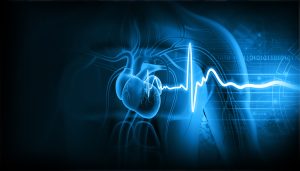Articles / Does the evidence for creatine live up to the claims?


writer
Program Director of Nutrition and Food Sciences, Accredited Practising Dietitian, University of South Australia
Creatine is a compound our body naturally makes to deliver energy to our muscles during exercise. Most (95%) is stored in muscle, with small amounts stored in the brain.
People use about 1–3 grams of creatine a day. Our body makes around half of this and we get the rest from protein-rich foods, such as meat and fish.
Creatine supplements come as powders, tablets and other forms, with doses ranging from 3–5g a day, to up to 20g. It’s difficult to get these levels from diet alone: you would need to eat about 1kg of meat to get 5g of creatine.
But can consuming greater levels of creatine help build muscle, improve athletic performance or boost brain health, as social media influencers claim?
Creatine increases the rate at which the body re-synthesises a molecule called adenosine triphosphate, or ATP, which provides us with energy. When we use ATP for energy, it’s broken down to another molecule, adenosine diphosphate, or ADP.
To be used as ATP again, ADP needs phosphate. This is where creatine helps. Creatine enters cells and adds the phosphate which was lost. The newly formed creatine phopshate then helps to very quickly re-synthesise ADP back to ATP.
Other energy systems we have to create ATP are comparatively slower.
Because of this quick action, creatine helps with short bursts of activities such as jumping and lifting weights.
This has an indirect effect on muscle-building and sports performance by allowing increased training that leads to improved strength, speed and power.
The evidence shows creatine is an effective nutritional supplement for athletes who want to improve physical performance and function in response to their training.
And you don’t have to be an elite athlete: gym-goers and weekend warriors can get similar benefits.
Most of the research on creatine outside of athletes has been in older adults. This is due to its ability to indirectly help with muscle gain and reduce sarcopeania (age-related muscle wasting).
There is good evidence that creatine supplements (5–20g per day) can improve muscle mass and strength when combined with resistance training in older people.
A review of the research, which included 22 studies in people aged 57–70, found it improved muscle mass by 1.4kg and resulted in a small increase in strength.
Another review of 12 studies considered older adults taking 3–20 grams of creatine supplements a day. It found combining creatine with resistance training 2–3 times per week resulted in more muscle and strength gains compared to resistance training alone.
When it comes to bone health and improving bone density, the evidence is not clear. Some studies show benefits, while others don’t. An overall analysis of five studies found there was no effect.
However, there is some evidence that creatine improves older people’s ability to go from sitting to standing, which is a good predictor of falls.
Another review looked at the impact on cognitive function across 16 studies. Participants were aged 20 to 77 years and were either healthy or had conditions such as fibromyalgia, mild cognitive impairment associated with Parkinson’s disease, and schizophrenia.
The reviewers found creatine supplementation (5–20g a day) had positive effects on memory, attention time and information processing speed. The benefits were greater in people with disease, those aged between 18 and 60, and among women.
Another review of eight studies also showed creatine improved memory in healthy people, with greater improvements in older adults aged 66 to 76. The effect was similar between those who took high (20g) and low doses (3g).
An earlier review showed similar improvements with memory and reasoning among healthy people who consumed 5-20g of creatine for between five days and six weeks.
A 2021 review of creatine across the lifespan indicates creatine maybe useful for pre- and post-menopausal women to improve strength and brain function, and reduce mental fatigue.
For adults aged over 60, supplementation may provide some benefits for cognitive and muscle mass, particularly if you’re physically active.
But there isn’t an evidence base to support its general use across the younger population, beyond athletic performance.
Creatine is generally considered to be safe. Some users report side effects, mostly related to gastrointestinal problems such as nausea and stomach upset. Some people also experience headaches and muscle cramps when they change the amount or frequency.
Creatine may lead to temporary water gain, seen with a small increase in weight. But this subsides after a few days of supplementation.
The evidence is not clear yet for creatine supplementation for certain people, including those who are pregnant, breastfeeding, have kidney disease or liver disease, or who have psychiatric disorders.
As with any supplement, and in particular if you have underlying health conditions, talk to your doctor if you’re considering taking creatine.
Creatine as a supplement is synthetically made from sarcosine and cyanamide (no, it’s not related to cyanide). There are different forms of creatine supplements, but the research uses a type called creatine monohydrate.
There is no difference between brands that manufacture creatine monohydrate and you don’t need to buy it with added ingredients.
If you do want to try creatine, monitor your use over 4–8 weeks to see if you notice an improvement. And if you don’t, you might want to save your money.![]()
Evangeline Mantzioris, Program Director of Nutrition and Food Sciences, Accredited Practising Dietitian, University of South Australia
This article is republished from The Conversation under a Creative Commons license. Read the original article.

Allergen Introduction – Practical Tips for GPs

Oral Contraception Update

What do we do With High Triglycerides?

An Update on Heart Failure in Primary Care

writer
Program Director of Nutrition and Food Sciences, Accredited Practising Dietitian, University of South Australia

Very overestimated
Moderately/slightly overestimated
Quite accurate
Moderately/slightly underestimated
Very underestimated
Listen to expert interviews.
Click to open in a new tab
Browse the latest articles from Healthed.
Once you confirm you’ve read this article you can complete a Patient Case Review to earn 0.5 hours CPD in the Reviewing Performance (RP) category.
Select ‘Confirm & learn‘ when you have read this article in its entirety and you will be taken to begin your Patient Case Review.





